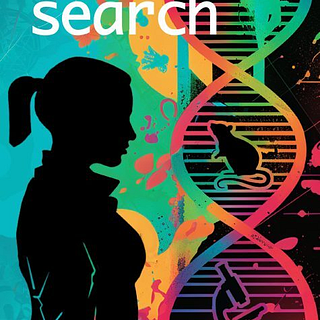Simona’s Search (world premiere)
Hartford Stage
Hartford
Jan. 18, 2024
SImona’s Search, a new play by Martín Zimmerman, had a premise that instantly drew me in. Simona (played by Alejandra Escalante) is obsessed with her father, Papi’s (Al Rodrigo), past. She starts to have nightmares about his life. As she learns more about her father’s trauma, she begins to learn more about herself as well.
Escalante and Rodrigo give great performances, and both were fun to watch as they moved through the emotions of the two characters. Christopher Bannow, who plays Simona’s boyfriend Jake, is also strong in the play. There are some genuinely funny moments in the performance, and all three actors are game for whatever pathos or silliness the script asks for.
Unfortunately, some key decisions in how the story in Simona’s Search is delivered hamper their work.

There are two major issues with the story in Simona’s Search. First is the way that the story is narrated. Simona narrates her own story, which is a common expository technique in plays. Where this approach falters is that Simona narrates large parts of the play’s potential action.
For example, the play opens with Simona telling the story of her and her friends entering her father’s room without permission during a sleepover. This is a scene that needs to be performed, not told. It’s the one clear example of how Papi’s PTSD manifests, but the audience is left to imagine it.
Another problem of this approach is that Simona is largely narrating the past, and that takes the action out of the present. Stories visit their own past through flashbacks all the time, but in the best stories those flashbacks play out as if it’s the present — we can actually watch the flashback be performed. When Simona spends time telling us what happened instead of performing it through action, the past feels too much like the past, and it drags on the present action that does show up in the play.
The second, more concerning issue is the surprising lack of details and specifics in the play, primarily regarding Papi and his past. The audience never learns where Papi is from, only that it’s a place that speaks Spanish. We also never learn what Papi endured, or why.
This makes Papi come across as a hollow character with no grounding. Was he a freedom fighter? A government official? An innocent civilian?
Without that info, he’s merely a vessel for Simona’s suffering, which is also ill-defined as a result. The themes of culture and identity fall flat because there is no culture or identity on display. There’s not much that connects Simona and Papi other than the fact that we’re told they’re father and daughter.
The lack of specificity also makes it difficult to situate the play in time and space. Was Papi tortured in 1930’s Spain? 1960’s Cuba? 1990’s Colombia? There’s no way to tell.
There are references to scientific research in the play, but without some background knowledge about the research, again it’s difficult to tell when the play is happening. The research could have been published 30 years or 30 days ago as far as the audience can tell.
Fortunately, these are issues that can be corrected with more drafting. The audience needs to see the pivotal moments of the story performed on stage, and needs to know who Papi is and where he comes from. Those two changes would greatly elevate a play that has strong writing and strong performances, along with some neat uses of technology. The world premiere of a new project must be a nerve wracking experience, but hopefully this can be the first step in developing Simona’s Search into a great play.
NEXT
Simona’s Story continues at Hartford Stage through Feb. 11.
Jamil goes to crash his old professor’s book-signing event (but he doesn’t know it)






